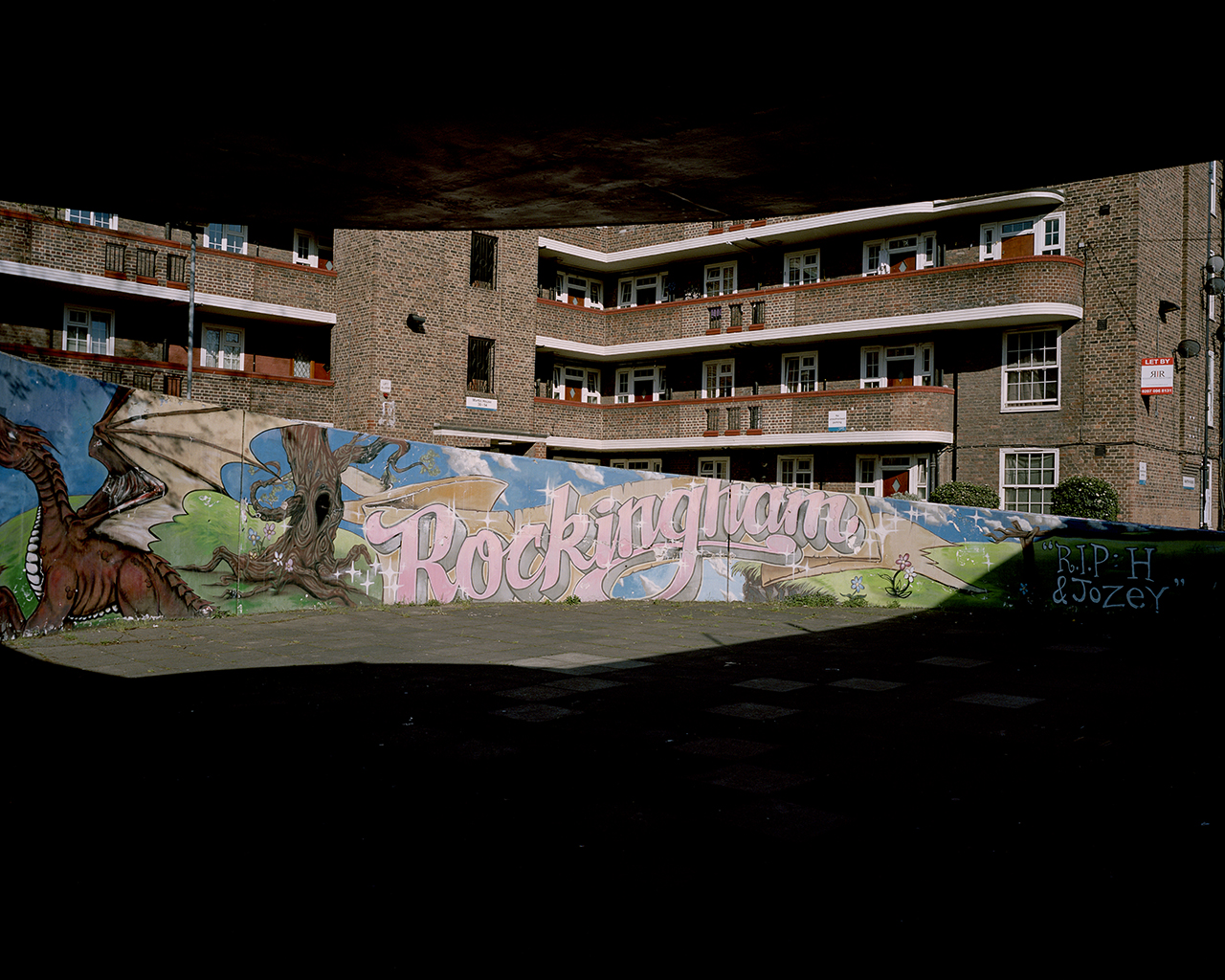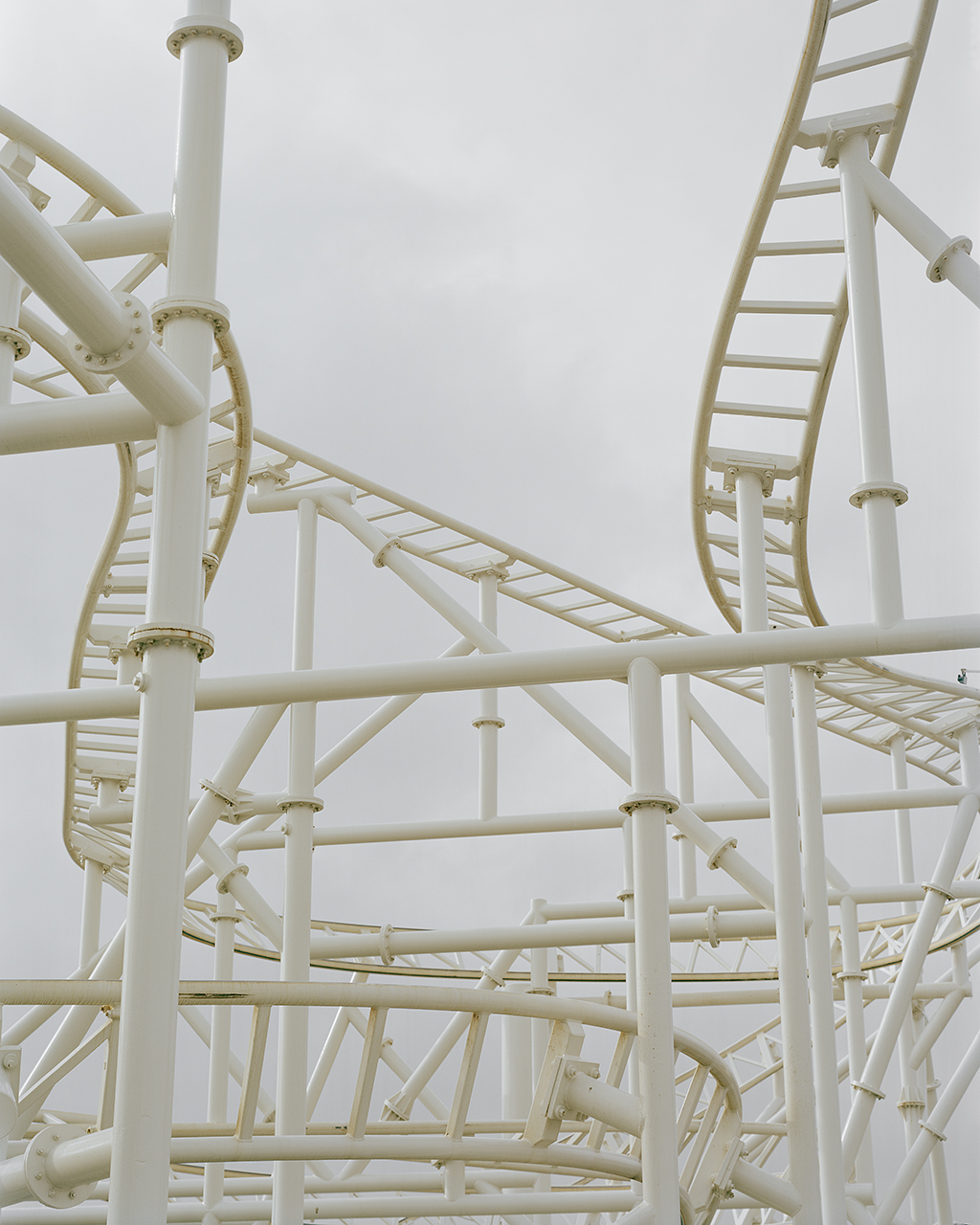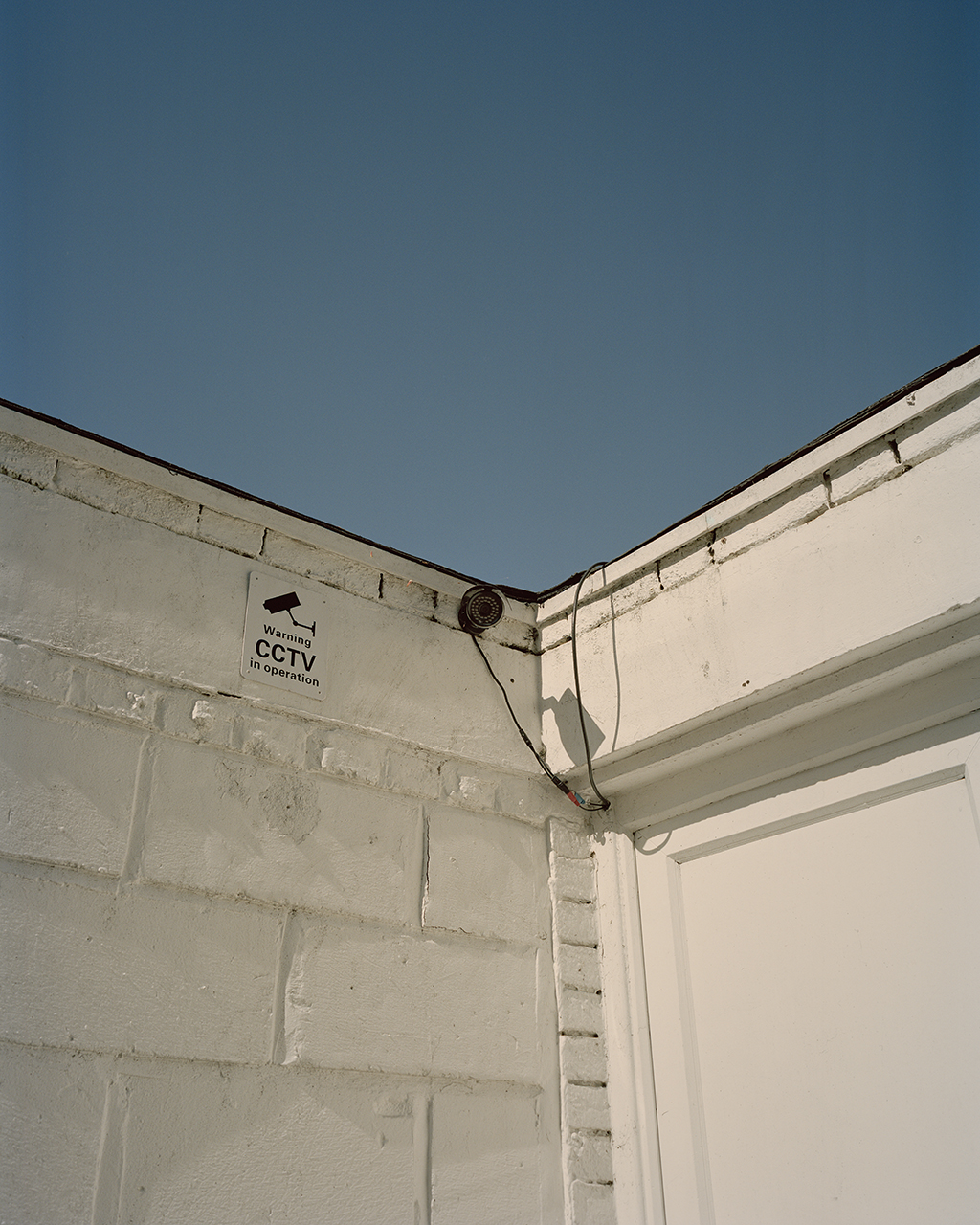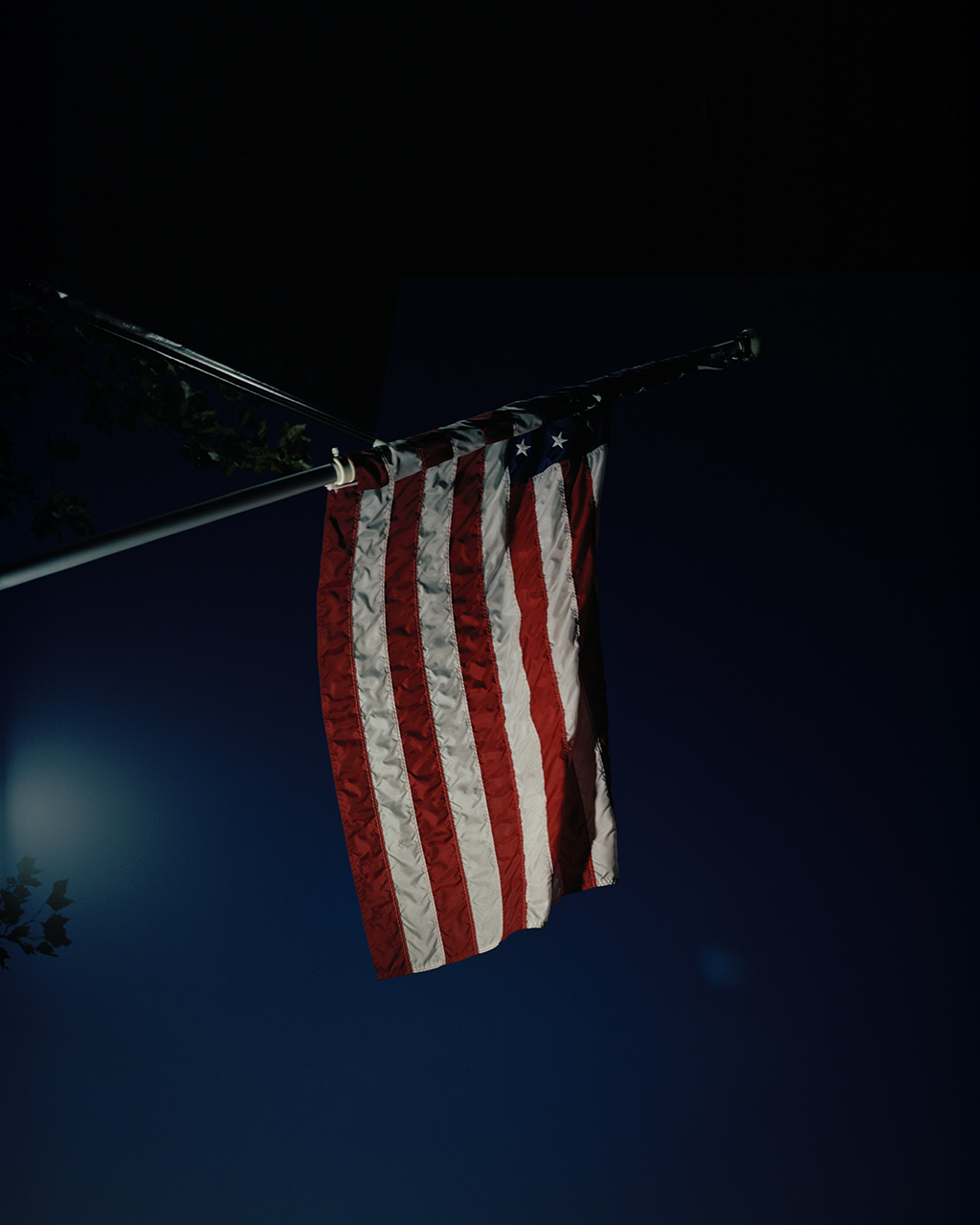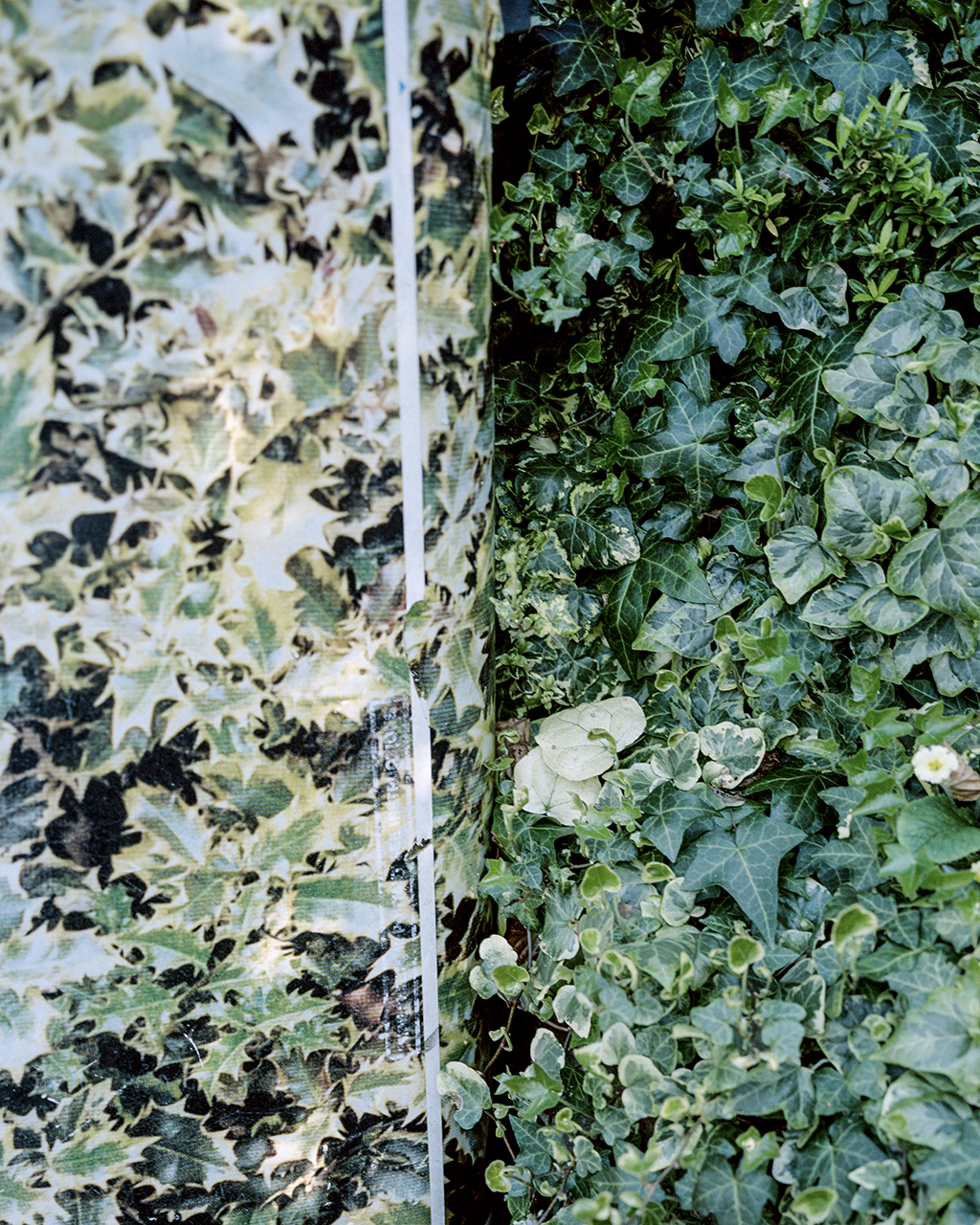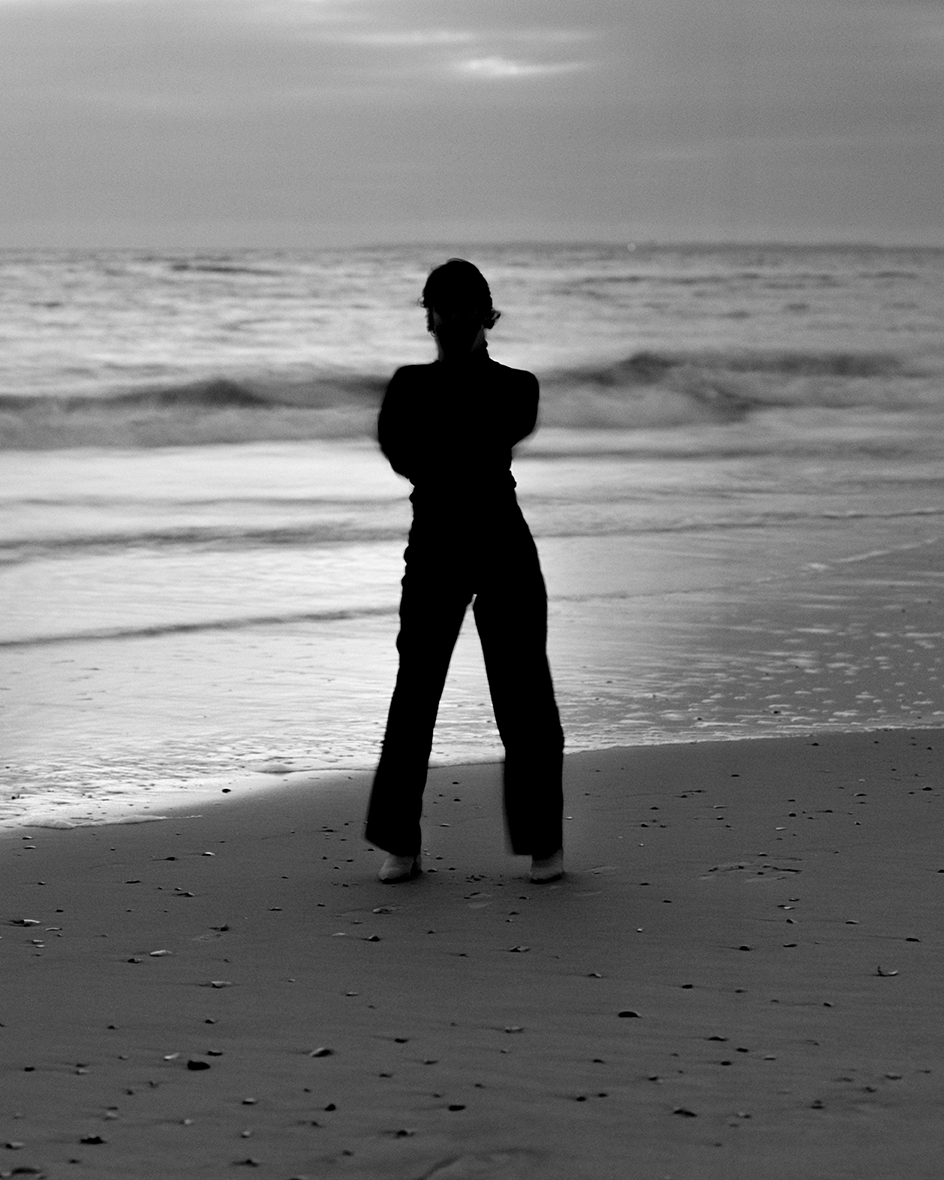A Church Getting Turned Into Luxury Housing. © Tejan Rahim.
“This is a project about all the things that make me depressed and anxious – it‘s about racism and identity, the environment and climate change, religion and family, history and culture”
For Tejan Rahim, taking a photograph is not just an artistic decision, it is also a means by which he can preserve an image, process its contents, and communicate the thoughts and emotions attached to it. Rahim has aphantasia – also known as ‘mind blindness’ – a visual condition in which people are unable to visualise imagery. “Photography functions as a way for me to keep visual references and memories outside of my head,” he says. “At times, it functions as a life-vest, helping me to keep my head above water.”
Rahim likens his practice to “journalling” and says that his photographs can be read as manifestations of his current mood and mental health. Recently, his work has taken a decidedly darker turn, reflecting the fact that Rahim has been dealing with several sources of anxiety. These can be found as themes within his latest project In The Teeth of The Most Terrifying Odds.
He explains: “This is a project about all the things that make me depressed and anxious – it’s about racism and identity, the environment and climate change, religion and family, history and culture, and everything else I find myself thinking about, and the complicated ways that it all intersects.”
Spanning the years 2017 to 2020, the series has been a while in the making, and yet only properly took shape during 2022. Digging through his archive, Rahim began to pair images together that he felt had synergy, and slowly narratives began to emerge. “It wasn’t a project that was conceptualised prior to taking the photos, but rather was pulled together after the fact. It kind of inspired itself,” he explains. Curating each image carefully, he soon realised that his fears and worries had consciously or subconsciously worked their way into his photography over the years, showing up in both obvious and unlikely places.
In one photograph, titled Mammy, we can just make out a blurry collection of old figurines, the type of which has long since been denounced as racist and derogatory. Originating in the Jim Crow era as a way of reinforcing negative Black stereotypes, these figurines can still occasionally be found for sale. “I was in a gift shop in the Caribbean and though the shop was owned and operated by Black people, most of the customers were white so there was this weird tension,” Rahim says. “I didn’t go out of my way to find that, it just happened, and stuff like that happens all the time if your eyes are open to it.”
In another photograph, titled Ownership Is Theft, the connection to race is perhaps less obvious, yet guided by the author’s perspective, we can begin to forge a link. We notice a ghostly hand wrapped around a tree and, unable to see the body it is attached to, we sense a feeling of possessiveness, of claiming the tree. Rahim explains that this image speaks to notions of colonialism and the idea that land ownership is theft. “I was also thinking about how 90 percent of sub-Saharan cultural artefacts exist outside of Africa and the role that museums and other institutions play in maintaining violent power structures,” he explains.
Across the rest of the series, themes such as these, as well as numerous others, arise. Many of the images carry a sense of foreboding. At times, their emptiness can feel bleak, and symbols such as the American flag, barbed wire, CCTV, padlocked gates, and flowers of bereavement hint at the subjects and issues currently affecting Rahim. As you move through the photographs, the tension builds and the heaviness of the subject matter becomes apparent. The final photograph, however, which shows the lower half of a figure sat on a chair, marks a departure from the melancholy.
Rahim says this image symbolises hope and appreciation. “This was my attempt at ending what is often a very depressing project on a more uplifting note. It’s a reminder to practise gratitude and be thankful for the objects and the people that support me everyday – even in all the small ways that I don’t notice or forget about. Like a chair supporting me as I sit at my desk and type this or the friends that help me in the innumerable ways that they do.”
The post Tejan Rahim’s latest series carries the weight of the world appeared first on 1854 Photography.

